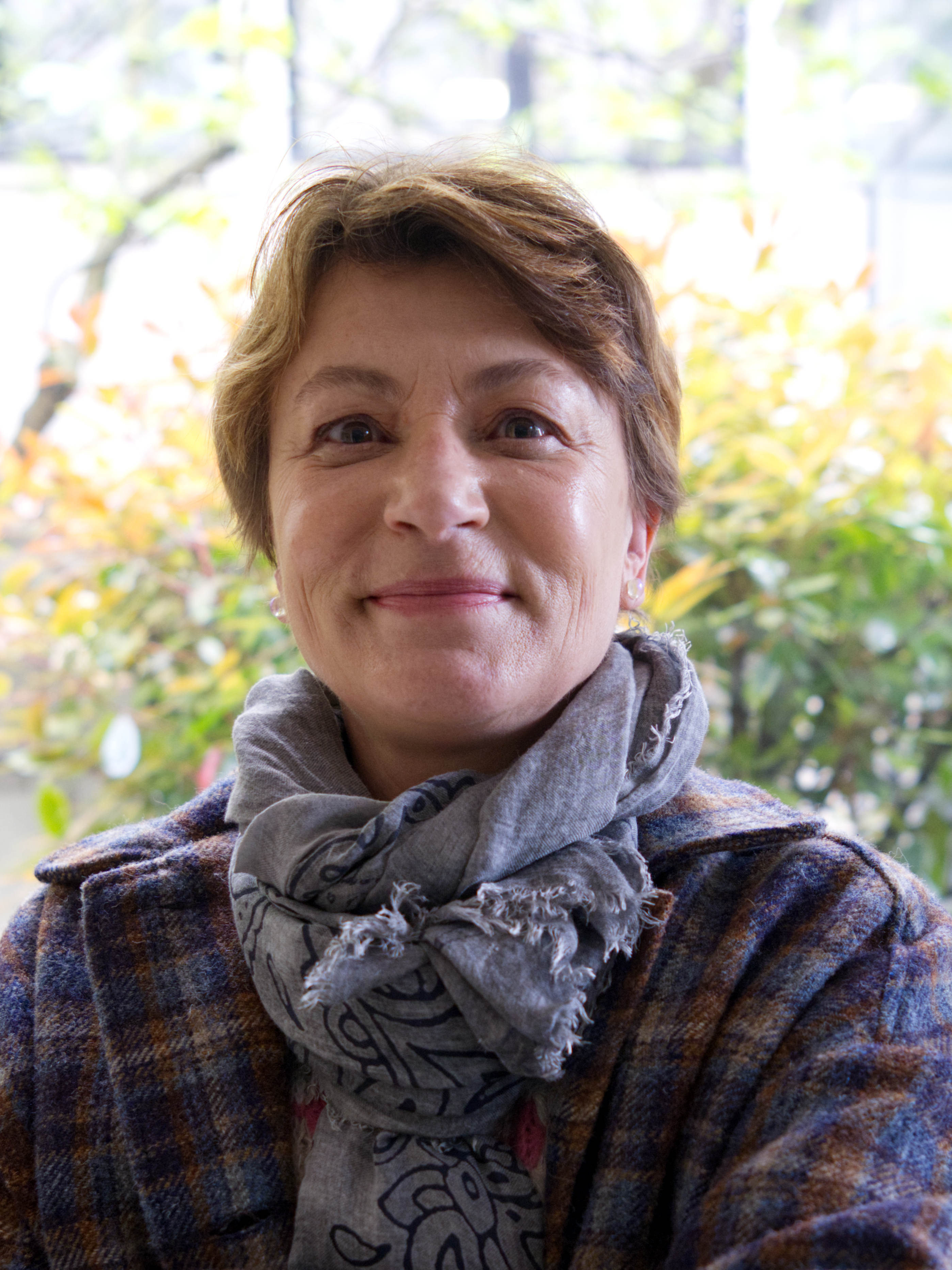Corinne Leloup (Amiot)

Job
PhD, UBE Full Professor
- 2007 : Accreditation to Supervise Research (Highest french university degree, named HDR)
- 1995 : Physiopathology PhD, Paris Denis Diderot University, France
Activities
Research theme
Corinne Leloup is a physiologist specializing in neuroscience. Using animal models and neuronal cell lines, her research focuses on understanding the detection mechanisms that enable hypothalamic integration of “blood glucose level” information, then studying the consequences of this detection on several axes: the one leading to energetic control of food intake and the one involving vagal control of insulin secretion (brain-pancreas axis). After completing a thesis in 1995 at the University Paris D. Diderot (under the supervision of Dr. L. Pénicaud), where she demonstrated for the first time the presence of the glucose transporter GLUT2 in the central nervous system, in particular in hypothalamic astrocytes, she joined the Lausanne Physiology Laboratory (PJ Magistretti group, Switzerland) in 1996. In 1997, she was recruited by competitive examination for a position as lecturer in Toulouse (P. Sabatier University, Toulouse, France), where she studied the role of the glucose transporter GLUT4 and insulin at neuronal level. She then turned her attention to mitochondrial energy signals produced at the hypothalamic level in response to hyperglycemia. In 2009, she joined the CSGA in Dijon after a competitive examination to become a University full Professor. She has benefited from several ANR-funds (since 2007) and FEDER grants, as well as project-based research awards. During 2012-13, she was a visiting professor at Northwestern University, Feinberg School department, in Chicago. This enabled her to develop further skills in Dr. F. Mauvais-Jarvis' lab. Since 2014, she has been in charge of a research team dedicated to the detection of sugars. She filed a patent in 2018 thanks to the support of SATT Sayens, and founded a start-up in 2023 with the Eurobio company, Anthomed. Her research work has been published in 64 articles and reviews in international journals (1994-2024), and book chapters, with 6 thesis supervisions.
Responsability
Co-direction of the team SuPeR
Deputy Director of the CSGA since 2021
National responsibilities: member of CNU 69 (neurosciences), since 2018; involvement in the evaluation of laboratories with the AERES (become HCERES); ANR (France) and NSERC (Canada) projects, France Region’s projets, private foundations (Danone)
Elected to several national commissions and councils in relation to research, as well as local university commissions: research, cefvu; member for unit co-piloting.
Key words
Physiology & neuroscience, hypothalamus, neurons and astrocytes, glucose sensing, food intake, metabolism, mitochondria/mitochondrial dynamics and respiration, brain sweet taste receptors, sweeteners
Important publications
- Carneiro L, Fenech C, Liénard F, Grall S, Abed B, Haydar J, Allard C, Desmoulins L, Paccoud R, Brindisi MC, Mouillot T, Brondel L, Fioramonti X, Pénicaud L, Jacquin-Piques A, Leloup C (2024). Hypothalamic glucose hypersensitivity-induced insulin secretion in the obese Zücker rat is reversed by central ghrelin treatment. Antioxid Redox Signal, 40(13-15):837-849. doi: 10.1089/ars.2022.0031.
- Desmoulins L, Chrétien C, Paccoud R, Collins S, Cruciani-Guglielmacci C, Galinier A, Liénard F, Quinault A, Grall S, Allard C, Fenech C, Carneiro L, Mouillot T, Fournel A, Knauf C, Fioramonti X, Pénicaud L, Leloup C (2019). Mitochondrial Dynamin-Related Protein 1 (DRP1) translocation in response to cerebral glucose is impaired in a rat model of early alteration in hypothalamic glucose sensing. Mol Metab, 20, 166-177. doi: 10.1016/j.molmet.2018.11.007.
- Allard C, Carneiro L, Grall S, Cline BH, Fioramonti X, Chrétien C, Baba-Aissa F, Giaume C, Pénicaud L, Leloup C (2014). Hypothalamic astroglial connexins are required for brain glucose sensing-induced insulin secretion. J Cereb Blood Flow Metab, 34(2), 339-46. doi: 10.1038/jcbfm.2013.206.
- Carneiro L, Allard C, Guissard C, Fioramonti X, Tourrel-Cuzin C, Bailbé D, Barreau C, Offer G, Nédelec E, Salin B, Rigoulet M, Belenguer P, Pénicaud L, Leloup C (2011). Importance of mitochondrial dynamin-related protein 1 in hypothalamic glucose sensitivity in rats. Antioxid Redox Signal, 17(3), 433-44. doi: 10.1089/ars.2011.4254.
- Leloup C, Casteilla L, Carrière A, Galinier A, Benani A, Carneiro L, Pénicaud L (2011).Balancing mitochondrial redox signaling: a key point in metabolic regulation. Antioxid Redox Signal, 14(3), 519-30. doi: 10.1089/ars.2010.3424.
- Colombani A-L , Carneiro L , Benani A, Galinier A, Jaillard T, Duparc T, Offer G, Lorsignol A, Magnan C, Casteilla L, Pénicaud L, Leloup C (2009). Enhanced hypothalamic glucose sensing in obesity: alteration of redox signaling. Diabetes, 58 (10), 2189-97. doi: 10.2337/db09-0110.
- Leloup C, Magnan C, Benani A, Bonnet E, Alquier T, Offer G, Carriere A, Périquet A, Fernandez Y, Ktorza A, Casteilla L, Pénicaud L (2006). Mitochondrial reactive oxygen species are required for hypothalamic glucose sensing. Diabetes, 55(7), 2084-90. doi: 10.2337/db06-0086.
- Pénicaud L, Leloup C, Lorsignol A, Alquier T, Guillod E (2002). Brain glucose sensing mechanism and glucose homeostasis.Curr Opin Clin Nutr Metab Care, 5(5), 539-43. doi: 10.1097/00075197-200209000-00013. Review.
- Leloup C, Orosco M, Serradas P, Nicolaïdis S, Pénicaud L (1998). Specific inhibition of GLUT2 in arcuate nucleus by antisense oligonucleotides suppresses nervous control of insulin secretion. Brain Res Mol Brain Res, 57(2), 275-80. doi: 10.1016/s0169-328x(98)00097-7.
- Leloup C, Arluison M, Kassis N, Lepetit N, Cartier N, Ferré P, Pénicaud L (1996).Discrete brain areas express the insulin-responsive glucose transporter GLUT4. Brain Res Mol Brain Res, 38(1), 45-53. doi: 10.1016/0169-328x(95)00306-d.
- Leloup C, Arluison M, Lepetit N, Cartier N, Marfaing-Jallat P, Ferré P, Pénicaud L (1994). Glucose transporter 2 (GLUT 2): expression in specific brain nuclei..Brain Res, 638(1-2), 221-6. doi: 10.1016/0006-8993(94)90653-x.

